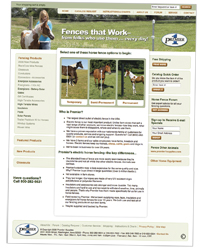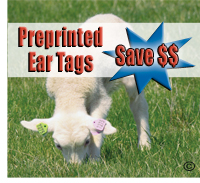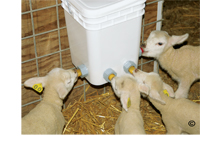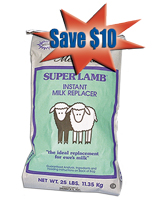Why US Food Producers Have a Bright Future
Those who know me would never describe me as a "Pollyanna." So why and how, in the midst of economic chaos and
fear, am I so positive about the future of US food producers?
I base my belief on these conclusions:
- We folks in the USA (with the exception of you and me, of course—who are anything but average!) have for
years been living beyond our means—spending more than we've been earning, consuming more than we've been
producing. We've managed to do so by borrowing the $$.
- The situation described in Point 1 above was not sustainable—so it ended. A period of adjustment is
underway during which we in the USA must learn, as a collective group, to consume less, invest more, produce more,
borrow less, and pay down our debts. No one can say with accuracy how long this period will last.
To make matters worse, the US government failed to adequately police/regulate the lending/borrowing
processes during the period described in Point 1. Down through history, looting always occurs when the
rules/police/regulators are absent or overwhelmed. "Grab what you can while you can, while the getting's good"
becomes systemic. That, in brutal terms, appears to me to describe a portion of the financial system during
this period. That said, the economic police have returned and the looting has stopped (or, is at least
reduced)—but the human cost for allowing the looting to occur will last for decades.
- The history of human culture tells us that the necessary adjustments will be made. The people of the USA will
adjust rapidly. (It's part of who we are.) It will be dramatic and noisy—but we will adjust.
How will the world appear in 3 to 5 years?
- Though it's relatively strong now (due to global fear), the value of the US dollar will be notably weaker
compared to the value of the Chinese and European currencies. This will make it easier to persuade people overseas
to buy US-made products.
And what product category can the US manufacture and export more efficiently than any other nation?
Food.
So I expect that US exports of meat, poultry, dairy products, eggs, grains, nuts and fruit will expand and
expand in the years ahead—and in so doing will push upward the value of these products in the domestic
market. So expect to pay more at the grocery store for meat, milk, eggs and bread.
- Taxes within the USA will go up. This is already "baked in the cake" by existing, proposed (think stimulus)
and inevitable (for Medicare, etc.) government spending at local, state and national levels. What form the tax
increases take is not yet clear. The logical options are: income taxes (national and state), FICA, sales tax (both
national and state), property taxes, estate taxes, carbon taxes. I expect most to rise gradually but
inexorably.
While most dislike taxes, their by-product is an enhanced incentive for each and every family to reduce
living expenses that must be paid for with after-tax $$. So those who can do so will begin to grow their own
food—since the vegetables, fruit, eggs and meat that you produce for yourself are not subject to tax.
Many will profit by growing food for resale in local stores and farmers' markets.
- Energy will be more expensive. I expect both its core cost and the taxes upon it to rise. That will drive up
the cost of heating and transportation—as well as nitrogen fertilizer. The latter will cause the comparative
value of soil nutrients provided by livestock manure and legumes to reach levels not seen for 70 years.
- All imported products will cost more than they do now (due to the lower value of the US dollar).
I'm not suggesting a return to the "good-old days" of the 1930s and '40s (which weren't so good for those
who experienced them). Far from it. Electricity, cars, computers, etc., are here to stay. Rather, a new era
will develop in which we respond to the new incentives by using our collective intelligence and creativity
(much of it distributed via the internet) to consume less, produce more and live better.
Conclusion: There has never been a better moment to expand your/our individual and collective abilities and efficiencies to produce food—both for yourself and for resale. It's one investment that is likely to pay off nicely. I don't think food prices will rise for the next 12 months—but after that the forces already in place will begin to have their effect.
by Stan Potratz, Owner
Return to top
FREE Ground Delivery for online orders over $100.
Click here for details.
Return to top
Save $$ Preprinted Ear Tags
If you are not particular about ear tag color or the number printed on the ear tag, Premier has tags available that have been returned for various circumstances.
Select any of the following tags:
Order soon! While Supplies Last!
Return to top
Premier's Preferred Orphan Feeding Program
To start, use Pritchard teats with warm artificial milk or colostrum.
After one day switch to latex (red or natural) teats in bucket teat units with at least 2 teat units on them. As soon as they learn to nurse readily, switch to cold milk. Offer it ad lib in the bucket.
Around day 5 offer grain (commercial lamb starter or soybean meal with cracked corn) in a feeder. Place a light (a heat lamp in winter) over the grain. We sprinkle leaves from legume hay over the mixture to encourage intake.
After 2 weeks switch to rubber teats.
By the fifth week their consumption/day will surprise you. So will the milk cost! Begin diluting the milk with water.
Week 6 and after offer only water. Tough love at this point is important!
Milk temperature-why cold?
Warm milk offered ad lib to orphans causes gorging and digestive disasters. Cold milk limits intake and encourages lambs to eat less costly dry feed instead. Remember-mother's milk is warm but it's produced constantly in only small amounts. Orphan buckets "produce" milk sporadically in large amounts.
So, use warm milk for newborns only. Thereafter, cold.
Customer Testimonial ...
Hello, I just wanted to send a huge thank you for the goat/lamb kid bottles that we ordered with the Pritchard version. They are fantastic! We have always used calf bottles in the past as that's what we have on hand because we also dairy farm ... but today one of our goats had triplets and they took to the bottles instantly!
from Sandra Houtz, PA
Return to top
Save $10 - Merrick™ Milk Replacer for Lambs
A proven milk replacer that consistently provides excellent results. Mixes completely in cold water with a vigorous stir with a wire whisk. Feed warm or cold either by hand or ad lib 2 lb. makes 1 gallon of milk.
Merrick, 25 lb. bag for $40 (reg. $50)
Order soon! Price good through March 31, 2009.
Return to top
"Backyard" poultry is booming. Premier has even started our own operation. To accommodate needs, we continue to identify and add products to assist in this venture. Includes waterers, feeders, heat lamps, etc.
View our complete line of poultry products.
Customer Testimonial ...
We have been using your PoultryNet for about 2 months. On August 1, 2008, we had our first bear visitor. He was very cautious and took his time walking the perimeter of the fence. Looks like he even sat down to wonder about it. The last photo (at right) was right before he touched his wet nose to the fence. Needless to say, we haven't seen him since.
Thank you again,
Quinn & Heather Metheny, PA
Return to top
Wormer Resistance Not Just a Problem
in the South
Preliminary data from the University of Minnesota suggests that producers in the Midwest should be aware of the
resistance status of the parasites in their herd or flock, according to a paper presented by Kate O'Conor, a
third-year student at University of Minnesota's College of Veterinary Medicine, at the recent U.S. Animal Health
Association (USAHA) annual meeting.
O'Conor pointed out that although anthelmintic resistance is a known problem in the southern and southeastern
United States, there has been very little study of the prevalence of resistance parasites in the rest of the country.
Therefore, a better understanding of the drug-resistance profiles of gastrointestinal parasites such as Haemonchus
contortus in small ruminant flocks and herds in Minnesota will allow producers and their veterinarians to make more
informed decisions about their deworming protocols and management practices.
Some animals in the Upper Midwest have been transported from the Southeast and are a source of potentially
resistant parasites. But an even bigger risk factor that increases the chances of developing anthelmintic resistance
include underdosing, either due to faulty equipment or underestimating the weight of each animal. Dosing guns should
be checked to make sure they are dispensing the correct amount of dewormer, and the dose should be delivered over the
back of the tongue to ensure that the entire amount enters the rumen where the drug is most effective.
Goats in particular present difficulties in the management of gastrointestinal parasites, according to O'Conor. The
selection of approved anthelmintics is limited. Because the effective compounds and doses are off-label, it is vital
that veterinarians work with producers to design parasite control programs for goats.
She reminds everyone that it's important to remember that the anthelmintic resistance exists in the population of
worms on a given farm. Each farm is different and the parasite control program will need to be modified for the needs
of each location. Part of the worm population is found in the animals, but a large portion of the population is found
on the ground, as eggs or larvae. Although it seems counterintuitive, moving animals that have just been dewormed to a
completely clean pasture means that all of the eggs shed onto the new pasture are from resistant worms. So in most
cases it is advisable to not move to "clean" ground post-deworming, because parasite resistance is slowed when
nonresistant and resistant worms can mate with each other.
"In any given herd or flock, 70-80% of the animals will have little to no worm burden, while the rest of the group
will harbor the majority of the adult worms and shed the largest number of parasite eggs," said O'Conor. "The
individuals with a large worm burden should be identified though a fecal egg count such as a modified McMasters test
or an indirect measure such as FAMACHA (an eye color chart). Treating only the most heavily parasitized animals
maintains a population of worms that have never been exposed to anthelmintics, called a refugia."
For excellent information on anthelmintic resistance in small ruminants, how to prolong the efficacy of
anthelmintic compounds and alternative methods of parasite control, visit the Southern Consortium for Small Ruminant
Parasite Control at www.scsrpc.org.
Sheep & Goat Health Report
National Institute for Animal Agriculture, Bowling Green, KY
Return to top
Premier's Horse Fence Website
- Exclusively horse fences
- Enriched with diagrams, photos, "dos & don'ts"
- Simple online ordering
- Most items shipped free
You can still visit www.premier1supplies.com for all species and products.
Return to top
Julie Cole
Julie Cole is Premier's employee of the month. She's been working here for just over a year as our receptionist and
is the friendly voice that you first hear when calling Premier. She especially enjoys the variety of work. "I not only
answer the phone and do other office duties, but I also get to help with production."
"The people I work with are the best part of Premier," Julie adds. "Everyone works as a team to get things done. I
also like and appreciate the e-mail notifications I get at home from Stan and Jean when the weather is bad." (Note:
Premier is located several miles from the nearby towns in a hilly area on a gravel road and, during our Midwest
winters, driving to work in the morning can sometimes get very tricky.)
Julie, who lives in Kalona, Iowa, has three children: Nick, 26, is recently married and coaches college wrestling;
Kyle, 23, works for a local agricultural company; and Jackie, 19, is attending a local college majoring in
communications. Duane is Julie's significant other and is a long-haul truck driver. She says her cat, Willy, is also
part of the family.
When not at the office, Julie enjoys spending time with her family, scrapbooking and watching wrestling (both sons
were excellent wrestlers), football, baseball, softball and volleyball. Julie says that her favorite statement is
"Treat others the way you would like to be treated," and that being respectful to others was something she tried to
instill in her kids as they were growing up.
Return to top
Weeknight Lasagna Toss
Ingredients:
1 lb lean ground beef
2 green peppers, chopped
3 garlic cloves, minced
26 oz jar spaghetti sauce
1-2/3 cup water
1/4 cup Italian salad dressing
12 lasagna noodles
1 cup mozzarella cheese, shredded
Cook ground beef in a large 4-quart saucepan over medium heat until beef is no longer pink; drain off excess
liquid. Add green peppers, garlic, spaghetti sauce, water and Italian dressing and bring to a boil. Break lasagna
noodles into quarters and add to pan. Reduce heat to medium-low; cover and cook 10 to 15 minutes or until noodles are
tender, stirring occasionally.
Remove from heat, pour lasagna into a serving dish and top with mozzarella cheese. Cover and let stand 5 minutes
until cheese is melted. Serve.
from Julie Cole, Premier employee
Return to top |








